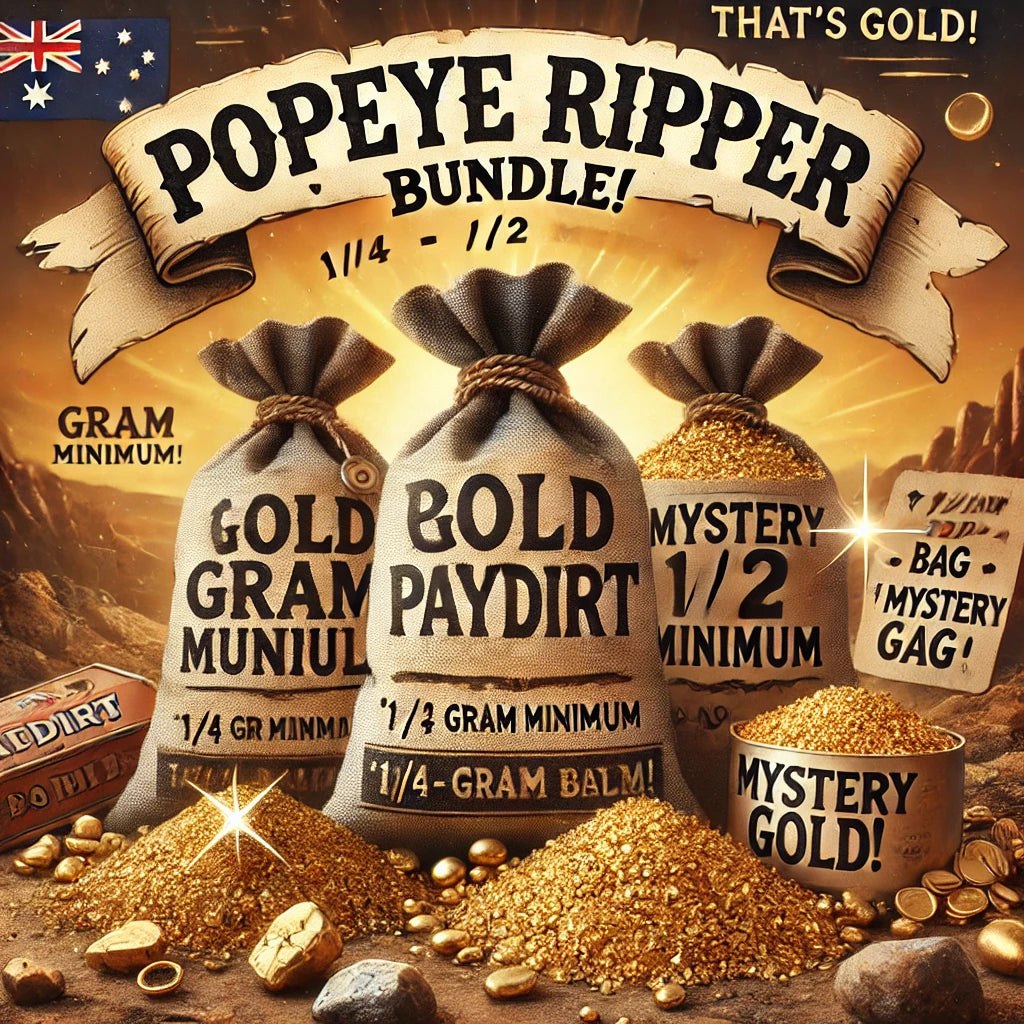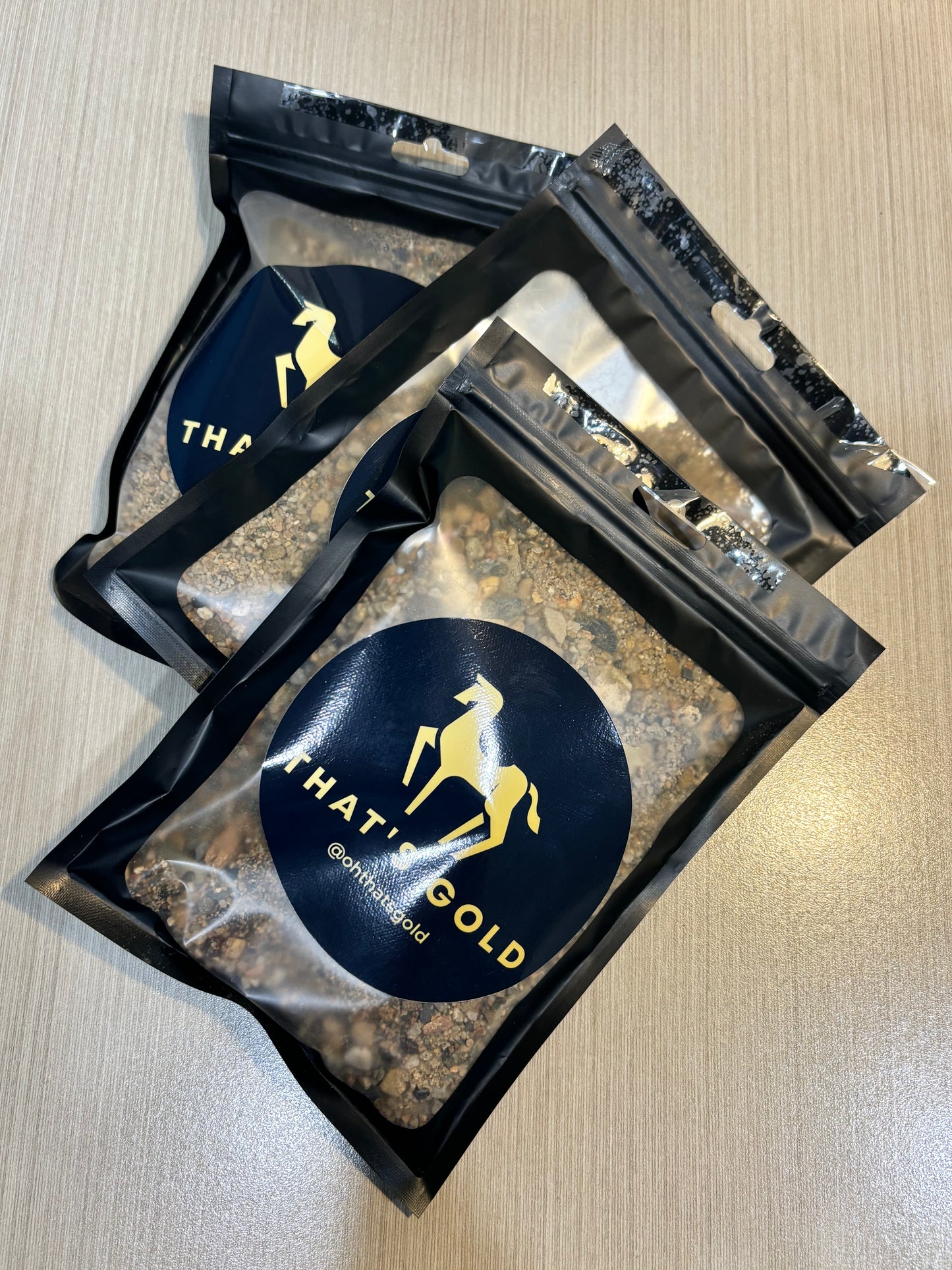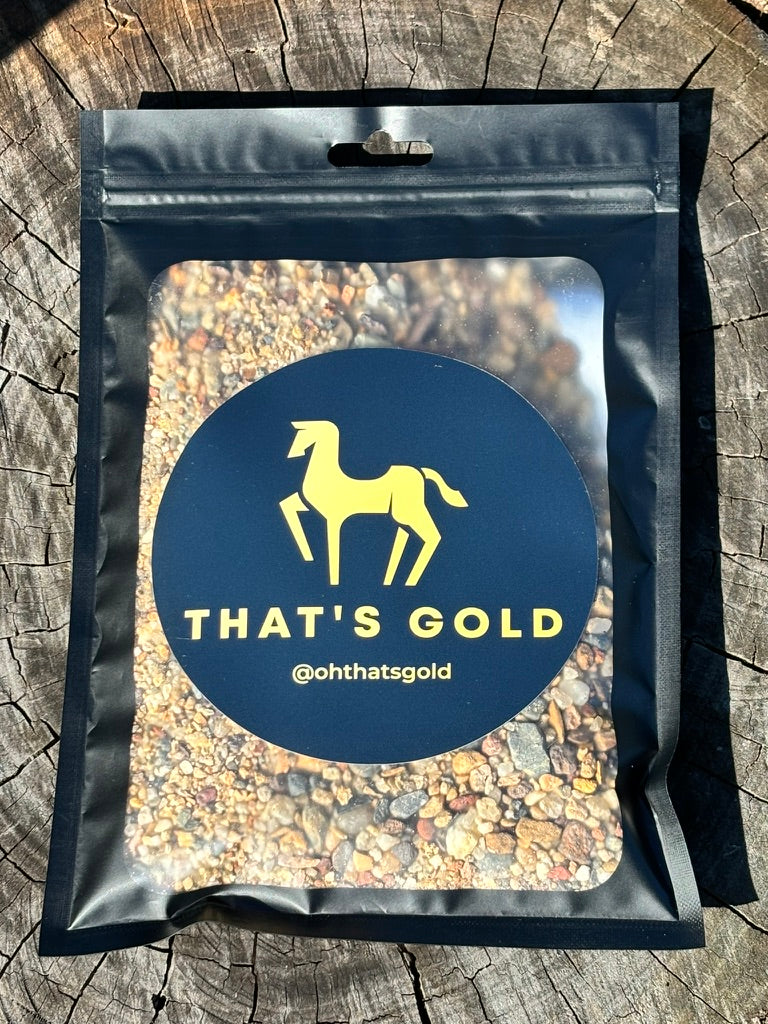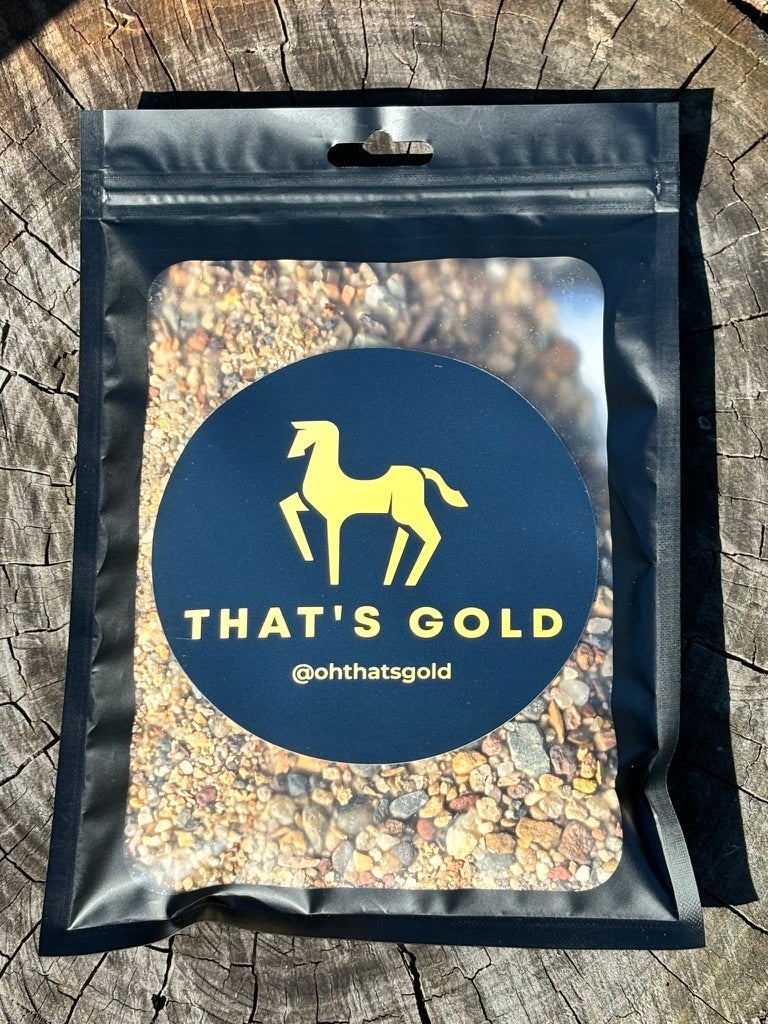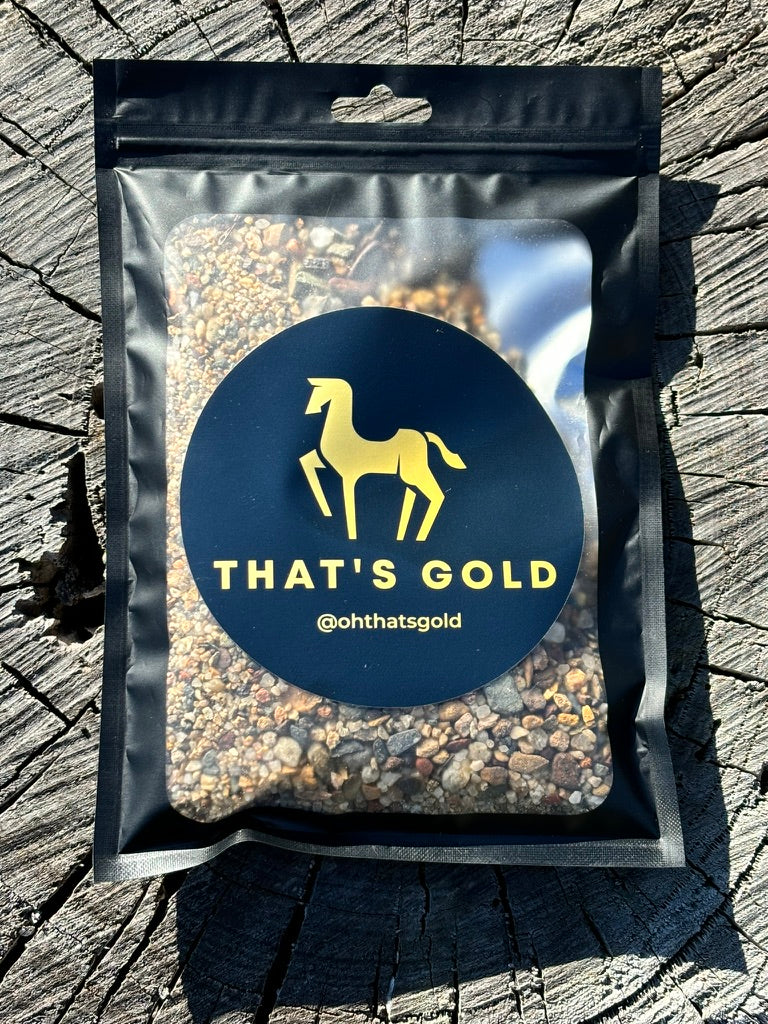That's Gold has quickly risen to be one of the most popular gold prospecting channels on YouTube, captivating both beginners and seasoned prospectors alike. The channel offers a wealth of information, from essential equipment advice to practical tips for maximizing gold recovery. Viewers can expect to learn the ins and outs of this exhilarating hobby while connecting with a community that shares their passion.
What sets That's Gold apart is its engaging content that delves into the fundamentals of gold prospecting. From regulations to safety measures, the channel covers crucial topics that every prospector should know. With an impressive following on social media, it encourages subscribers to join the journey of discovery and adventure in the field.
For anyone curious about gold prospecting or looking to enhance their skills, That's Gold is a treasure trove of insights and resources. This channel not only informs but also inspires, making it a must-watch for those ready to explore the world of gold hunting.
Key Takeaways
- That's Gold provides essential tips for both new and experienced prospectors.
- The channel fosters a strong community through social media engagement.
- Subscribers gain valuable insights on equipment and techniques for better gold recovery.
The Fundamentals of Gold Prospecting
Gold prospecting involves searching for gold deposits in nature. It has a rich history and requires knowledge of geology, various techniques, and types of deposits.
History and Importance of Gold in Australia
Gold was first discovered in Australia in the early 1850s. This led to the Gold Rush, particularly in areas like Kalgoorlie, Western Australia. The discovery resulted in rapid population growth and economic development in the country.
Gold has been a significant part of Australia’s economy. It has boosted trade and attracted many immigrants seeking fortune. Today, Australia is one of the world’s largest gold producers. Gold remains an important resource, driving both industry and tourism.
Understanding Geology and Gold Formation
Geology plays a critical role in locating gold deposits. Gold is often found in areas with specific geological features. It forms through various natural processes, including volcanic activity and erosion.
Gold can appear in two main forms: alluvial and placer deposits. Alluvial deposits occur when gold is eroded from its source and carried by water. Placer deposits are concentrated in certain areas, often along riverbeds or in valleys. Geological maps help prospectors find these potential gold-rich locations.
Prospecting Techniques and Approaches
Prospecting requires various techniques to locate gold. Detectors are popular tools that can detect metal underground. Panning is another common method, where the prospector uses a pan to separate gold from dirt and gravel.
Other techniques include using sluice boxes and digging holes to uncover deeper deposits. Modern technology, like geological mapping software, also aids in finding suitable spots. Understanding the local terrain and weather patterns can improve success rates.
Types of Gold Deposits
Gold deposits can be broadly classified into several types. Alluvial deposits, as mentioned, are created by water transporting gold particles. Placer deposits are where gold settles in concentrated areas, often near rivers.
Also, lode deposits are where gold is found in its original rock formation. These are usually harder to mine but contain larger quantities. Each type has unique characteristics and may require different prospecting methods to extract the gold effectively.
Equipment Essentials for Prospecting
When prospecting for gold, having the right equipment is crucial for success. Various tools cater to different methods, helping users efficiently search for gold nuggets and maximise their efforts.
Guide to Metal Detectors
A quality metal detector is essential for locating gold nuggets underground. These devices can detect metal objects buried in the soil. Beginners should look for models designed specifically for gold prospecting.
Key features to consider include:
- Sensitivity: A detector should be sensitive enough to find small nuggets.
- Frequency: Higher frequencies generally perform better for gold detection.
- Weight: Lightweight designs make it easier to search for extended periods.
Popular models include the Minelab GPZ 7000 and the Garrett AT Gold. Both offer excellent performance and user-friendly interfaces, making them great options for any level of prospector.
Utilising Gold Pans and Sluice Boxes
Gold pans and sluice boxes are traditional tools that are still effective today. A gold pan is a shallow, round dish used for washing gravel and sediment to separate gold from other materials.
When using a gold pan:
- Fill the pan with material from a riverbed.
- Submerge it in water and shake it gently.
- The lighter materials will wash away, leaving heavier gold nuggets behind.
Sluice boxes are longer, channel-like structures that help speed up the gold recovery process. They use flowing water to separate gold from sediment. Set up the sluice box in a water flow area, and pour material into it. The design catches gold while allowing lighter materials to wash away.
Must-Have Prospecting Gear for Beginners
Beginners should invest in some essential prospecting gear to enhance their experience. Aside from metal detectors and gold pans, they need to consider the following items:
- Shovel: A sturdy shovel helps dig up materials.
- Pickaxe: Useful for breaking harder ground or rock.
- Classifying Screens: These screens separate larger rocks from smaller materials, making it easier to pan for gold.
- Trowel: A handy tool for scraping and digging in tight spots.
Additionally, water bottles, gloves, and high-quality boots are important for comfort and safety while prospecting. Having the right gear can make a significant difference in a beginner's success and enjoyment in the field.
Regulatory Framework and Safety
Understanding the regulations and safety considerations is crucial for anyone involved in gold prospecting. Proper knowledge can prevent legal issues and ensure a secure experience in the field.
Prospecting Laws and Regulations
Gold prospectors in Australia must be aware of specific laws governing mining activities. Each state has its own regulatory framework, often overseen by the Department of Mines, Industry Regulation and Safety (DMIRS).
These laws typically outline requirements such as obtaining a mining licence or permit. It is essential for prospectors to register claims and respect land ownership and environmental regulations.
Failing to follow these regulations can result in fines or the revocation of permits. Additionally, a clear understanding of local laws helps maintain a positive relationship with authorities and the community.
Role of the Department of Mines
The Department of Mines, Industry Regulation and Safety (DMIRS) plays a key role in regulating gold prospecting activities. This government body ensures compliance with mining laws and promotes safe practices.
DMIRS offers guidance on licensing, permitting, and safety standards. They also conduct inspections to ensure that operations adhere to legal requirements.
Prospectors can access a wealth of resources through their website, including maps of licensed areas and guidelines for safe mining practices. Engaging with DMIRS support can help smooth the prospecting process.
Safety Considerations in the Field
Safety is a primary concern for gold prospectors. The outdoor environment poses various risks, such as unstable terrain, extreme weather, and hazardous wildlife.
Prospectors should always wear appropriate safety gear, including helmets, gloves, and sturdy boots. Carrying a first aid kit is also advisable.
Moreover, it is important to inform someone about the prospecting location and expected return time. Following best practices can significantly reduce the risk of accidents and ensure a safer prospecting experience.
Staying updated on safety regulations and guidelines from DMIRS enhances overall awareness and preparedness while in the field.
Maximising Gold Recovery
Maximising gold recovery involves using specific methods and strategies to increase the amount of gold one can extract. Understanding these techniques can greatly enhance a prospector's success in the field.
Techniques for Sifting and Extracting
Sifting and extracting are crucial steps in gold recovery. Using tools like a gold pan allows for effective separation of gold from sediment. The pan's wide, flat surface enables the user to swirl water and material gently, helping to filter out lighter particles.
Using a sluice box is another effective technique. This device captures gold by directing water through a channel lined with riffles, which trap heavier materials.
Investing in a high-quality metal detector can also boost recovery efforts. These detectors are designed to identify gold buried under sand or dirt. It is essential to follow local regulations when using these tools.
Identifying Gold-Rich Locations
Finding gold-rich locations is key to maximising recovery. Researching historical mining records can provide insights into areas with past gold discoveries. Maps showing old claims often point to regions that may still have gold.
Prospectors should also look for signs of placer deposits. Areas where rivers have eroded rocks containing gold often yield better results. Observing local geology is important; environments with quartz veins can indicate potential gold deposits nearby.
Joining local prospecting clubs can also help find promising spots. These groups often share tips and experiences regarding where to search for gold.
Strategies to Increase Gold Yield
Implementing effective strategies can significantly improve gold yield. Timing plays a role, so prospectors should consider searching after heavy rainfall, which can wash gold into streams.
Modifying the techniques used can also enhance yield. For example, using **wet methods†, like panning in water, can help in fine-tuning recovery processes. Keeping equipment clean and free of contaminants improves efficiency.
Adapting to changing conditions is vital for success. Monitoring gold prices can help in deciding when to invest in new equipment or expand operations. Careful planning and observation enable prospectors to increase their chances of finding gold effectively.
Practical Insights and Tips
Gold prospecting requires a blend of knowledge, experience, and effective techniques. Seasoned prospectors often have valuable tips and strategies to share. The following sections offer practical insights that can enhance the prospecting experience.
Real-Life Experiences of Seasoned Prospectors
Many experienced prospectors emphasise the importance of persistence. They often spend hours or days researching potential sites and then an equal amount of time searching with their equipment. Each location brings challenges that they learn from, understanding that failure often leads to greater success in the long run.
Additionally, seasoned prospectors recommend joining local prospecting clubs. These groups provide a support network and share insights about the best practices in their area. They stress the need for safety, including being aware of weather conditions and potential hazards in remote locations.
Learning from others' experiences enables new prospectors to avoid common mistakes, saving valuable time and effort in their quest for gold.
How to Read Geological Maps Effectively
Reading geological maps is crucial for successful prospecting. These maps indicate where gold deposits may be located based on the structure and composition of the land. Key features to look for include fault lines, river beds, and sediment types.
When studying a map, understanding the symbols and legend is essential. They represent different types of rock and soil, providing clues about where gold might be found. Prospectors should also look for areas of erosion, as these locations can reveal hidden deposits.
Creating a simple checklist while reviewing these maps can help keep the process organised. This can include, for example:
- Identifying the age of rock formations
- Noting nearby water sources
- Highlighting historical gold finds
Analysing Black Sand and Recognising Fakes
Black sand often marks areas rich in gold. Prospectors learn to analyse it closely. They should know that while black sand can contain particles of gold, it can also include other materials that may mimic gold's appearance, such as mica.
Carrying a small magnet can help differentiate magnetic black sand from gold, as true gold is not magnetic. If large particles are found, they should be examined for weight, as genuine gold is significantly heavier than other materials.
To avoid scams, prospectors should verify sources before purchasing prospecting tools and samples. Reliable dealers provide clear information about their products, ensuring that prospectors do not waste time or money on imitations or substandard materials.
Getting Involved in the Prospecting Community
Joining the prospecting community can enhance skills and provide valuable resources. Connecting with like-minded individuals can lead to a wealth of knowledge and shared experiences.
Joining Prospecting Clubs and Groups
Joining local prospecting clubs can be a great way to learn and connect. These clubs often host meetings and outings where members exchange tips, techniques, and equipment suggestions.
Members can benefit from workshops and training sessions. Clubs may also facilitate access to exclusive prospecting sites, giving members the chance to explore new areas.
Many clubs offer resources like ebooks or newsletters packed with valuable information. Finding a club aligned with one’s interests can lead to a fulfilling experience in the prospecting community.
Networking and Sharing Information
Networking is vital in the prospecting community. Social media platforms, particularly Facebook, host various groups where enthusiasts share their experiences and advice. Engaging in these groups can provide insights into local regulations and successful techniques.
Sharing personal stories or asking questions can help build relationships with other prospectors. It also promotes the sharing of valuable resources, such as guides to equipment or local tips.
Connecting with experienced prospectors allows newcomers to gain knowledge efficiently. Members are often willing to share their insights, making it easier to navigate the prospecting landscape.
Leveraging Media and Online Resources
Utilising various media and online resources can greatly enhance the gold prospecting experience. This includes educational content that deepens knowledge, engaging with online communities for support, and studying successful prospecting shows that inspire and inform.
Educational Content and Documentaries
Platforms like YouTube feature robust educational content on gold prospecting. Channels such as That's Gold offer tutorials, tips, and expert insights into effective prospecting techniques.
Viewers can learn about the latest equipment and learn best practices while gaining safety knowledge. Documentaries focusing on gold mining history and techniques provide context, helping enthusiasts understand the broader landscape.
By subscribing to these channels, users can access a wealth of information at their convenience, enhancing their skills and understanding of gold prospecting.
Online Forums and Social Media
Online forums and social media groups are vital for connecting with other gold prospectors. These platforms provide users with opportunities to share experiences, ask questions, and obtain advice from both beginners and seasoned pros.
Members can discuss everything from gear recommendations to recent finds, which fosters a sense of community. Additionally, social media platforms often highlight trending prospecting techniques, making it easy to keep up with industry developments.
Participating in these discussions can significantly enhance one's knowledge and confidence in gold prospecting.
Learning from Popular Prospecting Shows
Popular shows like Aussie Gold Hunters have captivated audiences and educated them about gold prospecting. These programs offer a real-world view of the challenges and rewards of the prospecting lifestyle.
Viewers can observe different strategies employed by experienced prospectors. They can also learn about the importance of teamwork and resource management in successful outings.
Watching these shows not only entertains but also inspires viewers to apply similar techniques in their own prospecting adventures. Following these programs can reveal valuable lessons that lead to improved prospecting success.
Frequently Asked Questions
Many people interested in gold prospecting in Australia have specific queries regarding the legal aspects, necessary equipment, and recommended regions for successful prospecting. This section provides clear answers to common questions that new and experienced prospectors may have.
What are the legal requirements for gold prospecting in Australia?
In Australia, gold prospectors must obtain the appropriate permits before commencing any activities. Each state and territory has its own laws, so it is essential to check local regulations. Prospectors may also need landowner permission, especially on private property.
How can beginners get started with gold prospecting in Australia?
Beginners should begin by researching local gold prospecting clubs for guidance and support. Joining a club can provide valuable information and mentoring from experienced prospectors. It is also recommended to start with basic equipment before investing in more advanced tools.
What equipment is essential for a successful gold prospecting trip?
Essential equipment includes a metal detector, gold pan, and shovel. Prospectors may also benefit from tools like classifiers for sifting through soil and containers for storing finds. Proper clothing and safety gear are crucial for comfort and protection during outings.
Which regions in Australia are currently known for gold discoveries?
Regions like Victoria's Goldfields, Western Australia's Kalgoorlie, and New South Wales’ Hill End are famous for gold discoveries. These areas have a rich history of gold mining and continue to yield new finds. Local reports and mining forums offer updates on new discoveries.
How do prospecting regulations vary across different Australian states and territories?
Prospecting regulations can differ significantly across states and territories. In some areas, a mining lease is required, while others may allow for simple permits. Understanding local laws is vital to ensure compliance and avoid penalties while prospecting.
What safety precautions should one take when prospecting for gold in the Australian outback?
Safety precautions are important when prospecting in remote areas. Prospectors should always inform someone of their planned route and estimated return. It is also essential to carry plenty of water, a first-aid kit, and a reliable means of communication to ensure safety in the outback.

